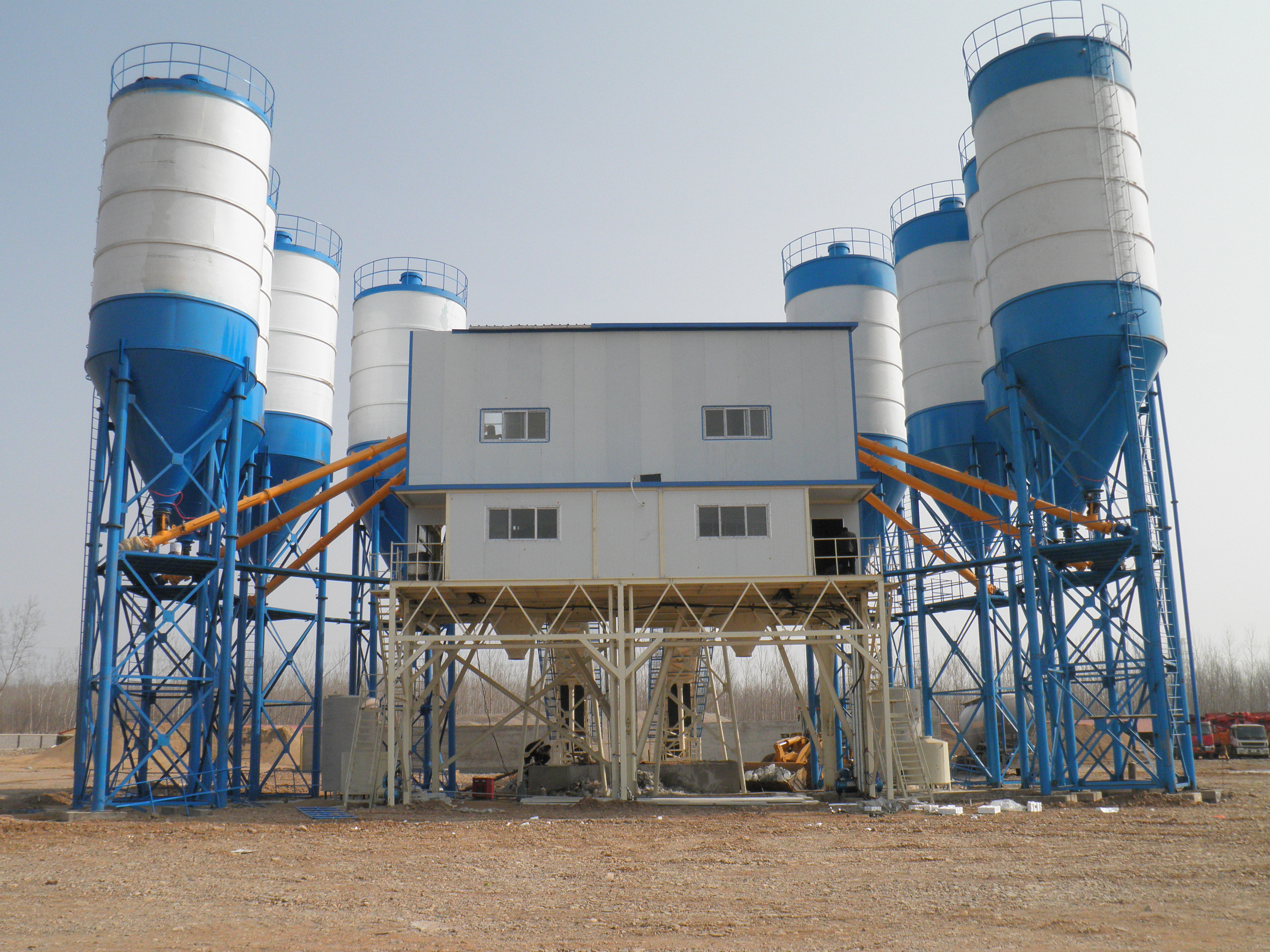Product Description
What is a Central Mix Concrete Plant?
A central mix concrete plant, also known as a wet concrete batching plant, combines all raw materials, including cement, fly ash, sand, water, and additives, in a central mixing machine. This type of plant differs from a truck mix concrete plant, where mixing occurs in a truck mixer. In some regions, a central mix concrete batching plant may be referred to as a wet mix concrete batching plant, while a truck mix concrete plant is known as a dry mix concrete batching plant.
The central mix plant is specialized in centralized mixing of concrete and includes a mixing mainframe, material weighing system, material conveying system, material storage system, control system, and other necessary facilities. By accurately weighing and mixing the components, the plant enables mass production of concrete, thereby enhancing construction efficiency, reducing costs, and ensuring quality.
To maintain concrete quality, the operation of the batching plant requires adherence to strict procedures for each component, control valves, and motors. The plant should be equipped with both automatic and manual working modes, with systems in place for alarm self-protection, anti-interference, and real-time monitoring of operational status. This ensures prompt resolution of any issues to minimize losses.
Central mix concrete plants are used in various industries such as railroads, highways, bridges, airports, tunnels, and hydropower projects, as well as in commercial concrete production. With its efficiency, stability, and reliability, the central mix plant plays a crucial role in providing high-quality concrete for diverse construction projects.
Technical Data
|
Model |
HZS60 |
HZS90 |
HZS120 |
HZS180 |
|
Capacity |
60m3/h |
90m3/h |
120m3/h |
180m3/h |
|
Mixing system |
Twin-shaft concrete mixer |
|||
|
Discharging height |
3900mm |
3900mm |
3900mm |
4000mm |
|
After-sale service |
Erection & commissioning, operator training |
|||
|
Warranty |
12 months after erection |
|||
|
Concrete mixer |
JS1000 |
JS1500 |
JS2000 |
JS3000 |
|
Discharging volume |
1000L |
1500L |
2000L |
3000L |
|
Mixing cycle |
60S |
60s |
60s |
60s |
|
Max. mixing size |
100/80mm |
100/80mm |
100/80mm |
120/80mm |
|
Aggregate batching machine |
PLD1600 |
PLD2400 |
PLD3200 |
PLD4800 |
|
Storage bins quantity |
2 or 3 or 4 sorts |
3 or 4 sorts |
3 or 4 or 5 or 6 sorts |
3 or 4 or 5 or 6 sorts |
|
Aggregate feeding to mixer by |
Belt conveyor |
|||
Usage
In most area of the world, projects only use central mix concrete batching plants, because every project need high quality concrete. In some area like South America, some people use truck mix concrete, because concrete plant far from the project, they use the truck to mix concrete, then add water to it. Its advantage is that it can increase the solidification time of concrete.
Advantages
Some of the advantages of central-mixed concrete plants are:
- Better quality control of mixed concrete
- Consistency of the concrete produced in each batch remains the same
- Higher production capability due to the size of the plant
- Faster batching and concrete production
- Reduced wear and tear of the mixer drums of the truck
The biggest advantage is that the quality of the concrete mix can be monitored for any variance prior to unloading them from the mixing machine to the transport tanker.
Features
The central mix concrete plant is equipped with a JS series twin-shaft concrete mixer with good mixing homogeneity of the concrete.
This enables high mixing uniformity and high productivity and can complete good mixing in ideal time for dry, semi-dry, plastic concrete, lightweight aggregates, and various other proportions of concrete.
With the compact structure and modular organization, it is convenient for transport and quick disassembly and assembly. This also meets the requirements of container transport.
Packaging and Delivery









